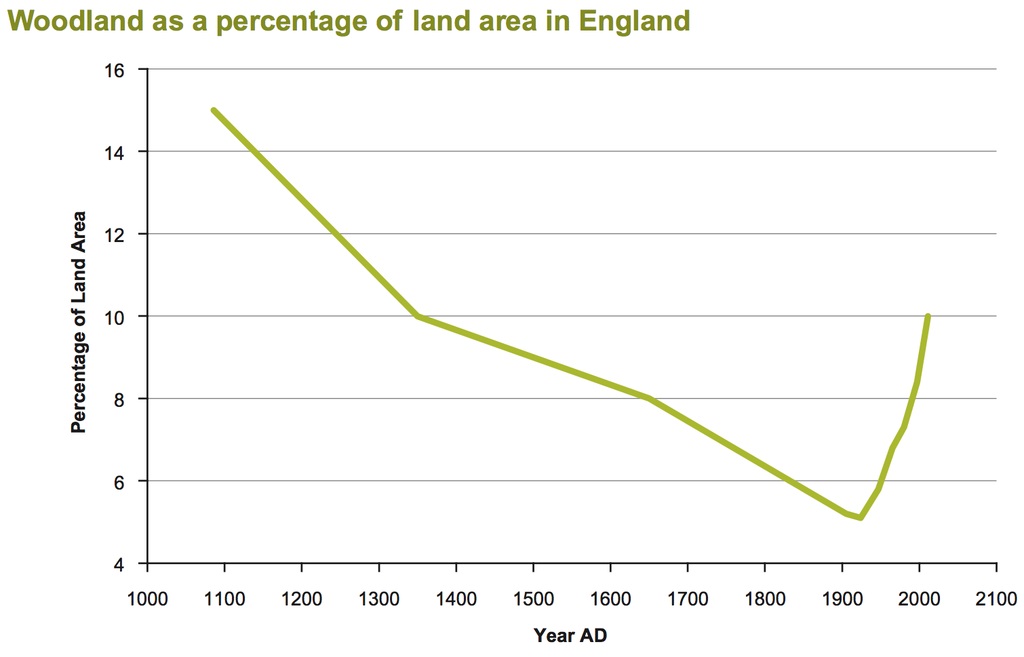@pawian
I don't know how this chart disproves what I said.
It shows a rebound in wood coverage at the turn of the century, by which point coal would have completely phased out wood as a source of energy and heat. Also, you can see the rate of decline in wood coverage was reduced in the period lasting from 1300 to 1700, which is when coal exploitation began to rise in Britain. It picked up again afterwards, but this is due to an explosion in the population of Britain.
Quote from Wiki:
Coal production increased dramatically in the 19th century as the Industrial Revolution gathered pace, as a fuel for steam engines such as the Newcomen engine, and later, the Watt steam engine. To produce firewood in the 1860s equivalent in energy terms to domestic consumption of coal would have required 25 million acres (100,000 km2) of land per year, nearly the entire farmland area of England (26 million acres (105,000 km2))Finally, my point was why the Industrial Revolution happened in Britain and not elsewhere. Pointing out that there were almost no forests left by the time it was in full swing is completely besides the point. Industrial, or rather proto-industrial extraction of coal in Britain began precisely in the 13th century - when sea coal began to run out, and people started following the seams inland. This happened in Britain several centuries before it happened in the rest of Europe, which again, is why Britain was well positioned for the Industrial Revolution to happen there.
Easier said than done
Yes. They would be flooded, unless active (expensive) measures were taken to place them on "conservation". Restarting flooded mines is near impossible, and much more expensive and much less safe than digging new ones.


